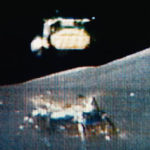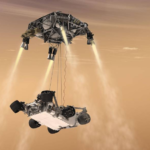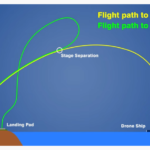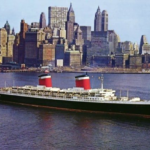The Mars Rover Sky Crane, SpaceX Self-Landing Booster, and the Apollo Lunar Lander are just a few examples of dramatic, radically unconventional thinking which led to astounding successes.
Time and distance have a way of blurring the hard edges, sharp points, and intense disputes which accompany innovation. Years later, what once seemed ridiculous or foolish is eventually thought of as an obvious, “of course, we knew it all along” idea. Now-routine rendezvous of spacecraft in orbit faced stiff opposition when proposed for the Apollo moon landing but eventually proved to be the only scenario that could work. The “disposable” mission profile and Lunar Module lander (Figure 3-1), was largely conceived and pushed single-handedly by John Houbolt, who passed away in 2014.
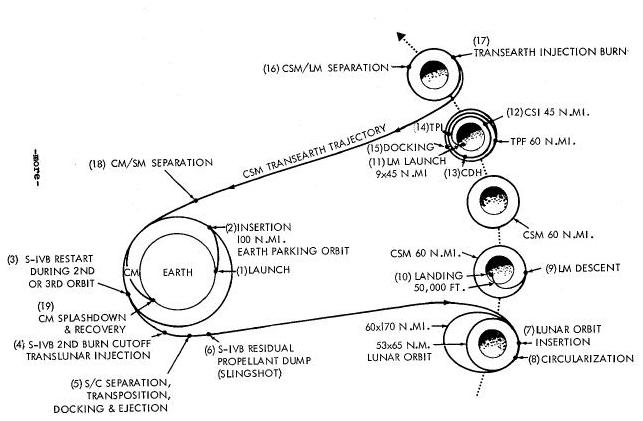
The original moon-landing plan was for the manned third-stage of the Earth launch rocket to “back down” to the moon’s surface, then take off and head back to Earth, just as in those movies of the 1950s such as the classic Destination Moon (Figure 3-2).
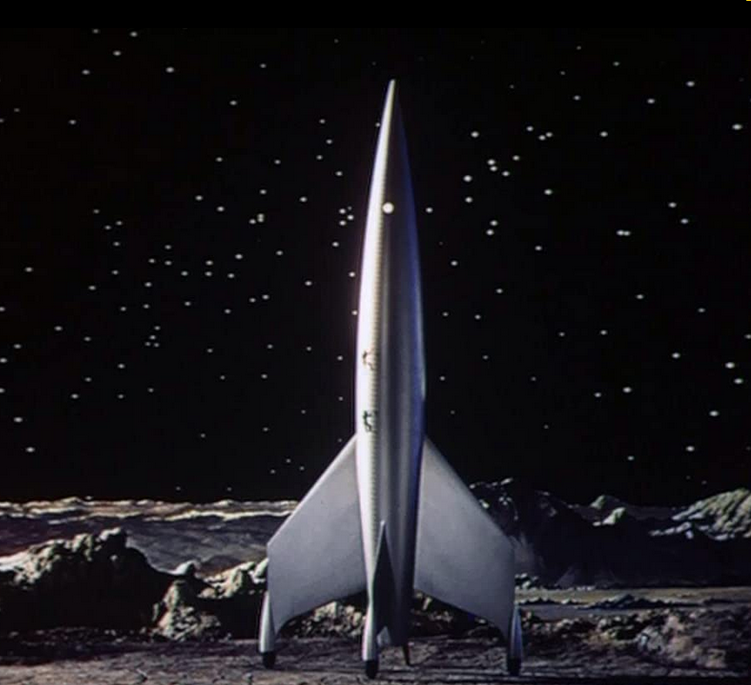
His radical idea of a mission with a lunar orbit rendezvous (Figure 3-3), and leave-behind Lunar Module descent stage with separatable ascent-liftoff stage (Figure 3-4), faced intense opposition and even some derision, References 1 and 5.
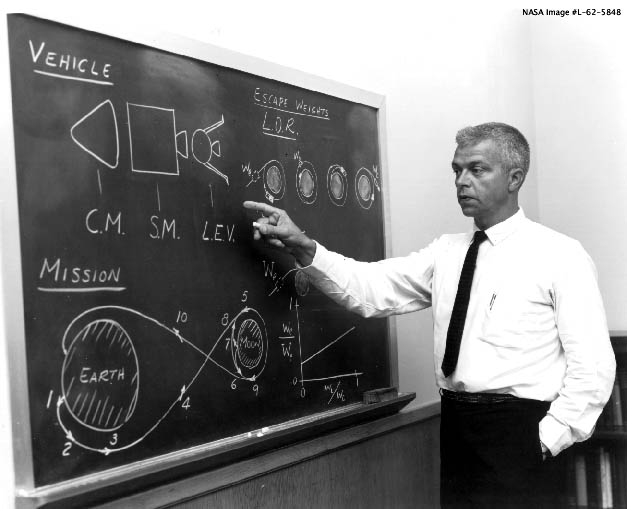
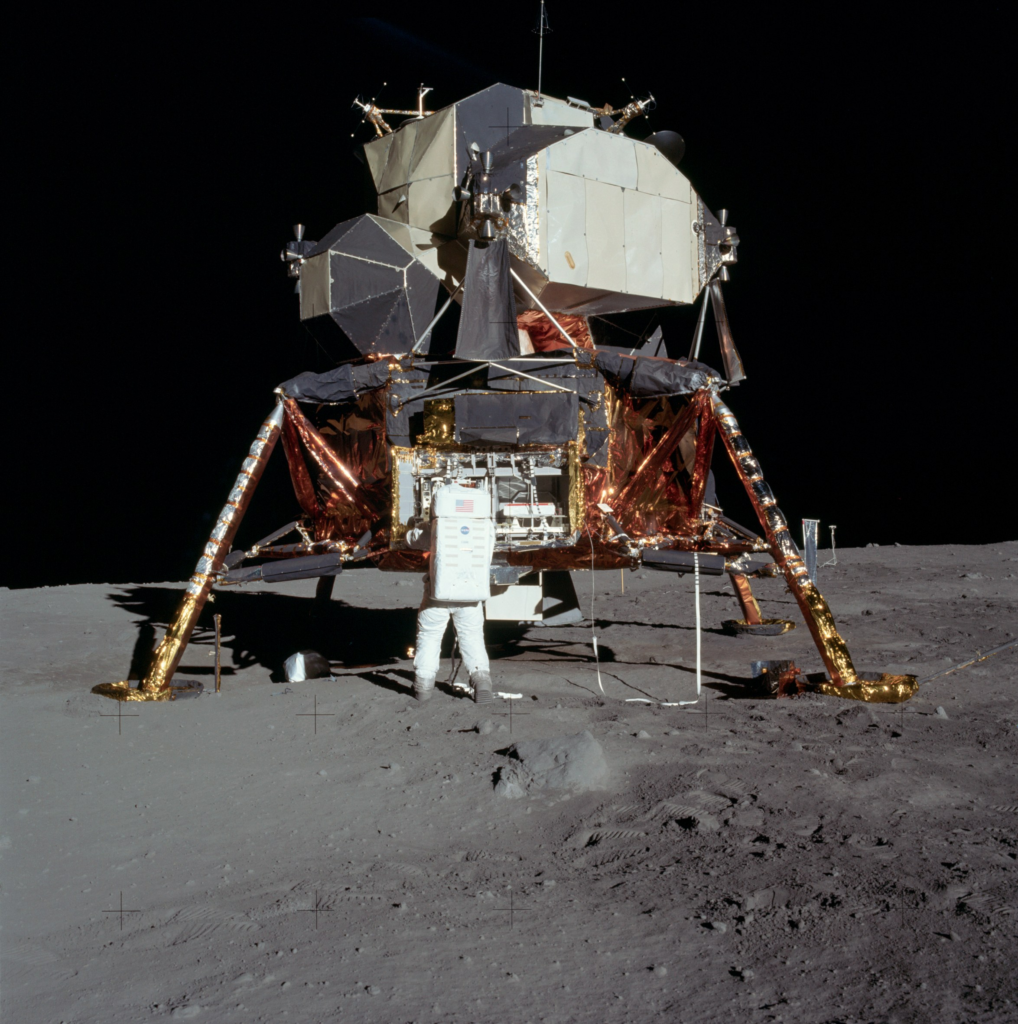
However, he persisted and tried to convince everyone he could talk to (Figure 3), even circumventing channels by writing a sharp, career-endangering letter directly to the Apollo project head Robert Seamens (who was six org-chart layers above him!). He was absolutely certain that the conventional-wisdom of the three-stage approach was an unworkable dead end, while his alternative was viable, and he could prove it. This is not a “hearsay” story: his letter is in the NASA archives (Reference 7), and many reputable witnesses back up the broader story. He was not being a go-along, get-along team player, that’s for sure.
Houbolt did his own assessment of the assumed direct-to-Moon-and-back approach and said it just wouldn’t work when all of the weight, fuel, and risk issues were considered. He made a strong case for his alternative, but the NASA establishment made an equally good case, at least initially. Many engineers up and down the organizational chain were legitimately very skeptical. They criticized his ideas and figures, as they certainly should have been in a project of this magnitude and complexity.
In fairness to those who Houbolt did not initially persuade, it’s important to keep in mind that at the point in the Apollo project where he was making his case, just about everything about the fundamental design and specifics of the mission was somewhere between a very rough estimate and a fairly wild guess. There were thousands of technical unknowns from the basic rocket and capsule structure to propulsion, weight, and guidance issues. Everyone was stumbling around in the dark, so to speak, and there were serious and convincing counterarguments to his approach.
EE World Related Content
- Engineering the atomic submarine, Part 1: One man’s audacity, determination, dedication revolutionized naval reality
- Engineering the atomic submarine, Part 2: One man’s audacity, determination, dedication revolutionized naval reality
- The first undersea transatlantic cable: An audacious project that (eventually) succeeded, Part 1
- The first undersea transatlantic cable: An audacious project that (eventually) succeeded, Part 2
- The Ocean Liner S.S. United States: Part 1 – An audacious concept
- The Ocean Liner S.S. United States: Part 2 – A radical design
- The Ocean Liner S.S. United States: Part 3 – Rapid obsolescence
- The Ocean Liner SS United States: Part 4 – The cruise ship as successor
External References
- Murray Cox & Catherine Cox Bly, “Apollo: The Race to the Moon”
- “SpaceX Lands All 3 Falcon Heavy Boosters for the First Time” (video)
- “How SpaceX Lands Rockets with Astonishing Accuracy” (video) (around 5:45 for schematic)
- SpaceX, “Falcon Heavy”
- NASA, “The Rendezvous That Was Almost Missed: Lunar Orbit Rendezvous and the Apollo Program”
- NASA, “Enchanted Rendezvous: The Lunar-Orbit Rendezvous Concept”
- Space Stack Exchange, “Text of John Houbolt’s letter proposing Lunar Orbit Rendezvous for Apollo?”
- MIT, Buzz Aldrin, “Line-Of-Sight Guidance Techniques For Manned Orbital Rendezvous“
- Buzz Aldrin, “Orbital Rendezvous“
- NASA, “John C. Houbolt, Unsung Hero of the Apollo Program, Dies at Age 95”
- Adam Steltzner and William Patrick “The Right Kind of Crazy: A True Story of Teamwork, Leadership, and High-Stakes Innovation”

